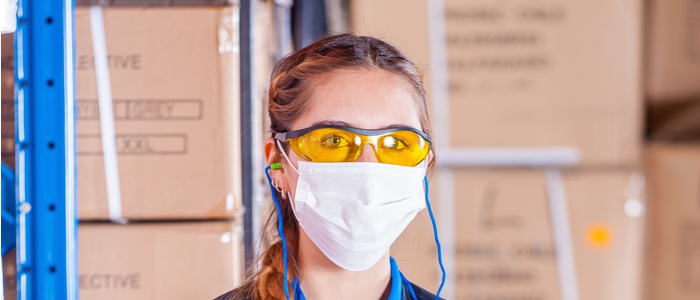Sanitation is a duel process that consists of cleaning protocols, followed by disinfection. During the cleaning process detergents are used to remove all physical matter and organic compounds, this ensures optimal, unhindered disinfection. ISO EN 13697 states that a disinfectant should provide a 4 log reduction (99,99%) of microbial count on both a clean and soiled surfaces.
Disinfectants used in food processing environments include lactic acid, quaternary ammonium containing chemicals, acetic acid, sodium hypochlorite, peracetic acid, hydrogen peroxide (H2O2), as well as other alternative, proprietary methods. Bacterial cells within a biofilm shows higher resistance to sanitation than cells in a planktonic state, since surfaces with newly deposited cells are easily disinfected. Therefore, decontaminating surfaces where biofilms are present, is more challenging since the biofilm structure provides protection to the microbial community inside the biofilm.
In such cases, the biofilm eradication concentration (BEC) of a sanitiser should be implemented. The BEC, is the concentration of sanitation treatment where the biofilm is unable to resuscitate and grow. This is important since the survival of L. monocytogenes, despite sanitation effort, results in the construction of denser and more robust biofilms.
The importance of correct sanitation practices is not only imperative in preventing increase of resistant bacteria but to also avoid increasing the virulence and in vitro proliferation. Deficient cleaning protocols are characterised by inadequate cleaning practises before disinfection protocols, insufficient disinfection of wet surfaces and inadequate sanitiser dosage and/or concentration application. The concept of resistant biofilms emanated after it was seen that antimicrobial agents did not provide full growth inhibition or control.
The misuse of quaternary ammonium compounds (QAC) in the food industry is one of the main factors that is leading to an increase in the incidence of antimicrobial resistance. There is an increasing amount of antimicrobially resistant L. monocytogenes strains that are being isolated from food processing environments.
It can be attributed to sub-lethal sanitation practises that stimulate antimicrobial resistance (AMR) stress responses and horizontal gene transfer and exchange of AMR genes in food processing environments. This is of great concern, since the main vehicle of human listeriosis is through contaminated food products.
The clinical outcome of listeriosis patients in the Netherlands and the presence of a benzalkonium chloride tolerance gene, emrC, of the bacteria was ecvaluated and it was found that the presence of the emrC gene increased the incidence of ST6 L. monocytogenes meningitis infection. This sequence type (ST6) is the same as most of the cases in South Africa.
It is crucial for the food industry to continuously evaluate (in regard to bacterial resistance) and correctly apply sanitation practises. The food industry should keep in mind not only the effect thereof on the processing environments microbial count, but the long-term safety of their consumers.
Author
Prof. Pieter Gouws
The National Institute for Communicable Diseases (NICD) is reporting a very large outbreak of Listeriosis in South Africa. Here are some facts that you should know.
...
Looking for a safety checklist for cleaning chemicals, that will help you and your staff handle them safely to avoid unnecessary accidents? This will help....
I have recently being doing a lot of cleaning at food facilities. It’s a long story….but I have learnt a few valuable lessons in the process. It’s one thing to make the audit finding another thing completely to take the corrective action. I have done a lot of research recently to...
I experienced nothing short of a paradigm shock recently, when a client warned me prior to the audit of their facility, saying “we clean using water every 3 months”. My reaction was... ...







